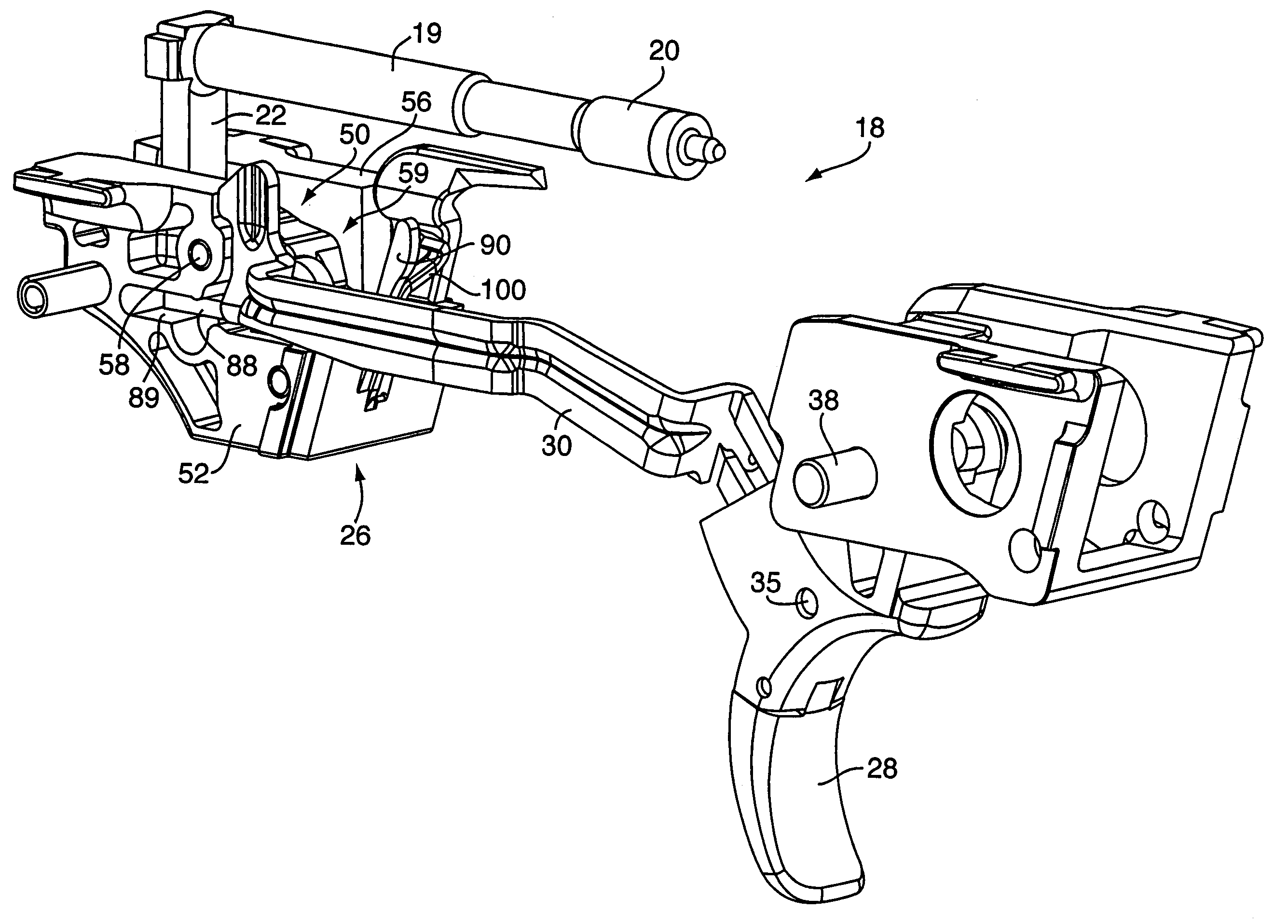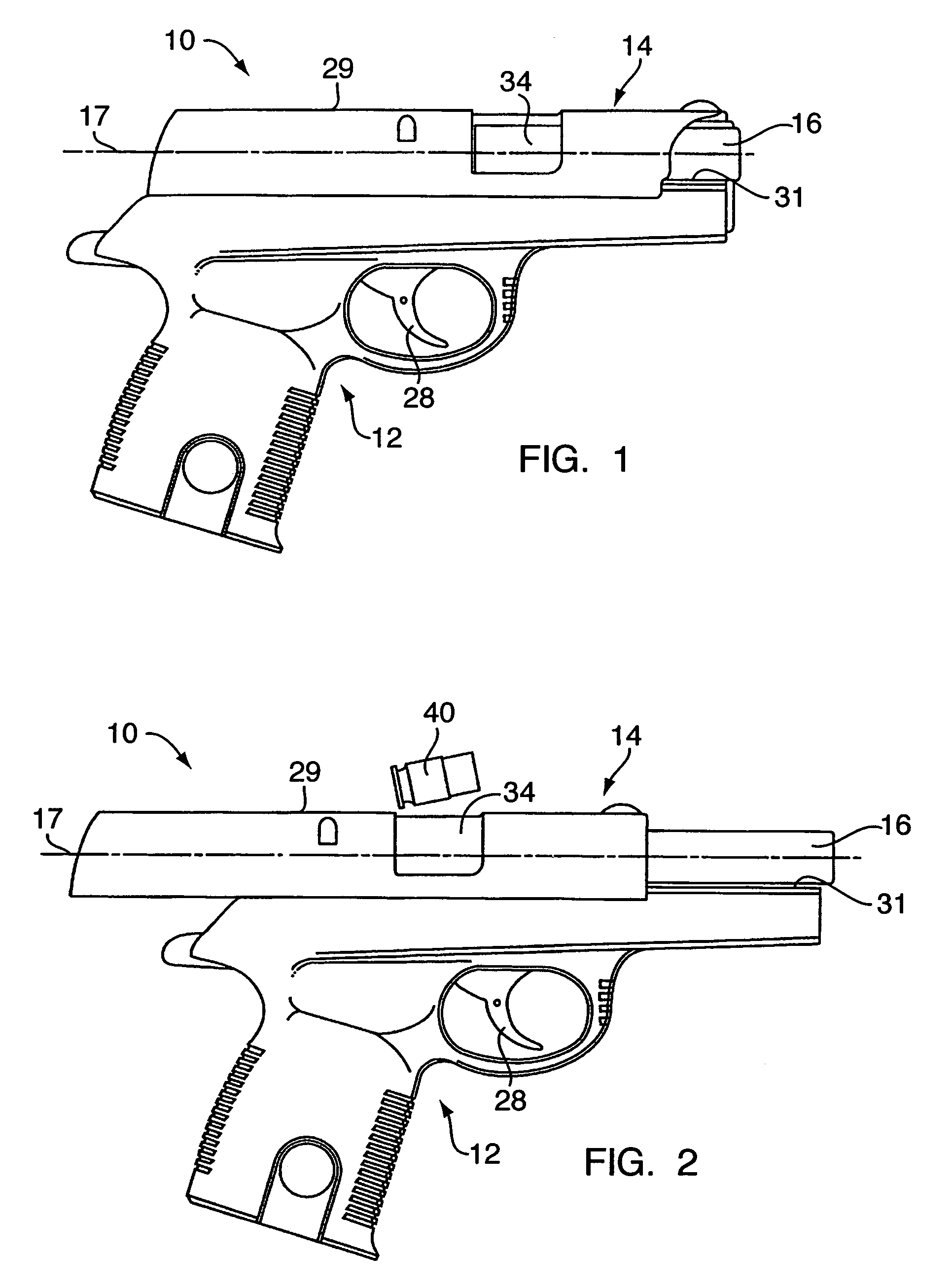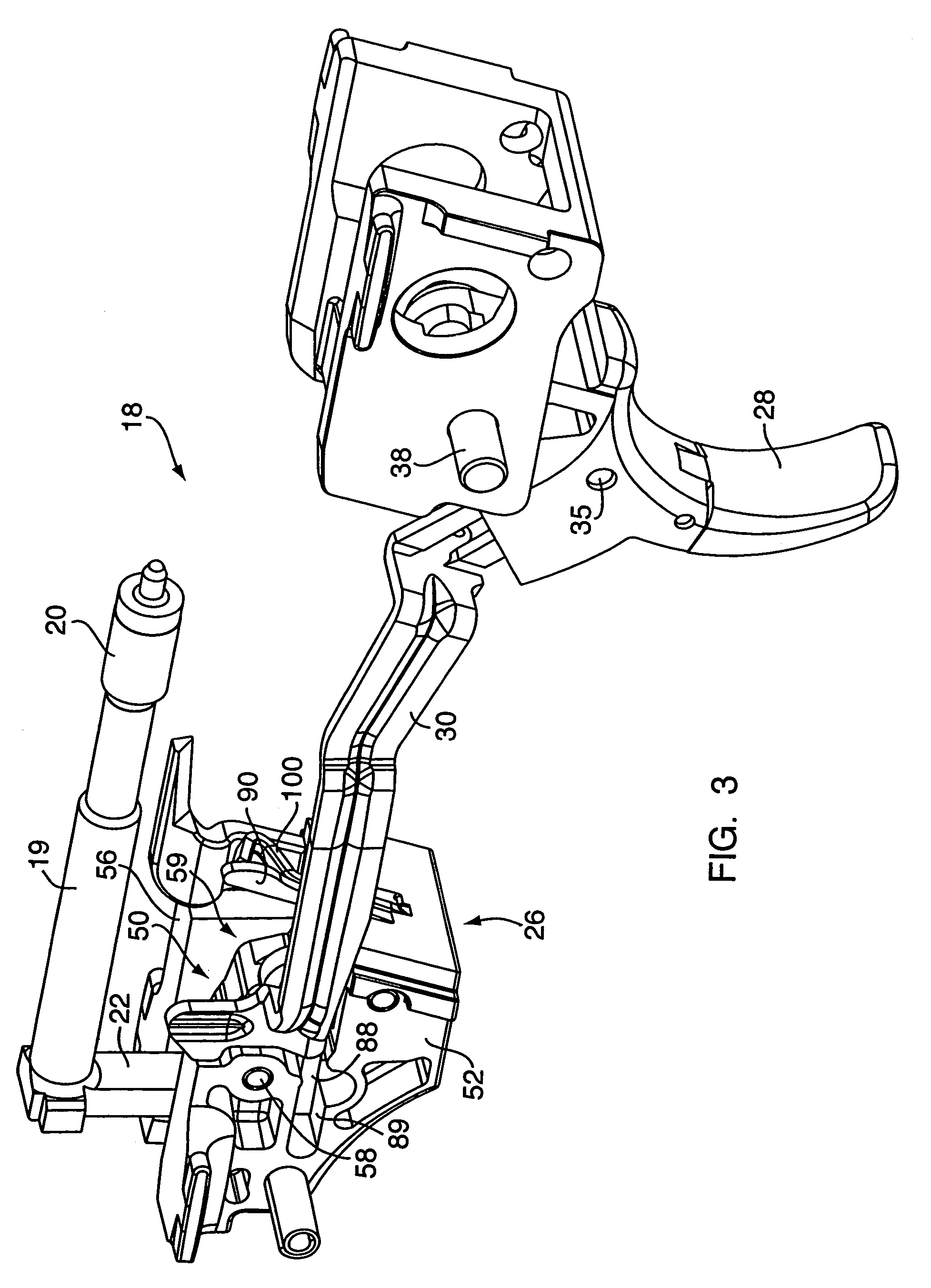Fire control mechanism for a firearm
a control mechanism and firearm technology, applied in the field of semiautomatic pistols or handguns, can solve the problem of handguns being rendered inoperable without a magazine, and achieve the effect of convenient separation
- Summary
- Abstract
- Description
- Claims
- Application Information
AI Technical Summary
Benefits of technology
Problems solved by technology
Method used
Image
Examples
Embodiment Construction
[0022]Referring to FIGS. 1 and 2, a semiautomatic pistol or handgun is shown generally at 10 and is hereinafter referred to as “handgun”10. The handgun 10 comprises a frame 12, a slide 14, a barrel 16, and a fire control mechanism 18 (see FIG. 3). The barrel 16 is disposed at the front aperture of the slide 14 and is cooperatively linked therewith, and, together with the slide 14, defines a longitudinal firing axis 17. The barrel 16 has a rearward end adapted for receiving an ammunition cartridge 40. A trigger 28 is pivotally mounted to the frame 12 to actuate the fire control mechanism to fire the handgun 10. The frame 12 is fabricated of a high-impact polymer material, metal, a combination of polymer and metal, or the like. The fire control mechanism or means 18 is provided for discharging a round of ammunition upon actuation of the trigger 28.
[0023]The slide 14 is fitted to opposingly-positioned rails 31 of the frame 12 to effect the reciprocal movement of the slide 14 along the ...
PUM
 Login to View More
Login to View More Abstract
Description
Claims
Application Information
 Login to View More
Login to View More - R&D
- Intellectual Property
- Life Sciences
- Materials
- Tech Scout
- Unparalleled Data Quality
- Higher Quality Content
- 60% Fewer Hallucinations
Browse by: Latest US Patents, China's latest patents, Technical Efficacy Thesaurus, Application Domain, Technology Topic, Popular Technical Reports.
© 2025 PatSnap. All rights reserved.Legal|Privacy policy|Modern Slavery Act Transparency Statement|Sitemap|About US| Contact US: help@patsnap.com



